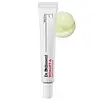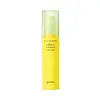What's inside
What's inside
 Key Ingredients
Key Ingredients

 Benefits
Benefits

 Concerns
Concerns

No concerns
 Ingredients Side-by-side
Ingredients Side-by-side

Water
Skin ConditioningCetyl Ethylhexanoate
EmollientGlycerin
HumectantCarthamus Tinctorius Seed Oil
MaskingSqualane
EmollientBrassica Campestris Sterols
EmollientButyrospermum Parkii Butter
Skin ConditioningCholesterol
EmollientPhytosteryl/Behenyl/Octyldodecyl Lauroyl Glutamate
Skin Conditioning1,2-Hexanediol
Skin ConditioningPolyglyceryl-10 Oleate
Skin ConditioningHydrogenated Lecithin
EmulsifyingSodium Hyaluronate
HumectantPolyglutamic Acid
Skin ConditioningCeramide NP
Skin ConditioningStearic Acid
CleansingTocopherol
AntioxidantOleic Acid
EmollientRetinal
Skin ConditioningAdenosine
Skin ConditioningDisodium EDTA
Water, Cetyl Ethylhexanoate, Glycerin, Carthamus Tinctorius Seed Oil, Squalane, Brassica Campestris Sterols, Butyrospermum Parkii Butter, Cholesterol, Phytosteryl/Behenyl/Octyldodecyl Lauroyl Glutamate, 1,2-Hexanediol, Polyglyceryl-10 Oleate, Hydrogenated Lecithin, Sodium Hyaluronate, Polyglutamic Acid, Ceramide NP, Stearic Acid, Tocopherol, Oleic Acid, Retinal, Adenosine, Disodium EDTA
Citrus Tangerina Extract
TonicButylene Glycol
HumectantGlycerin
HumectantPropanediol
SolventWater
Skin ConditioningPentaerythrityl Tetraethylhexanoate
EmollientPentylene Glycol
Skin ConditioningNiacinamide
SmoothingArbutin
Antioxidant1,2-Hexanediol
Skin ConditioningPolymethylsilsesquioxane
Diisostearyl Malate
EmollientVinyldimethicone
3-O-Ethyl Ascorbic Acid
Skin ConditioningAscorbic Acid Polypeptide
AntioxidantChlorella Vulgaris Extract
Skin ConditioningMelia Azadirachta Flower Extract
Skin ConditioningMelia Azadirachta Leaf Extract
Skin ConditioningCurcuma Longa Root Extract
MaskingOcimum Sanctum Leaf Extract
Skin ConditioningCorallina Officinalis Extract
Skin ConditioningDiglycerin
HumectantCaprylic/Capric/Myristic/Stearic Triglyceride
EmollientMethyl Methacrylate Crosspolymer
Sodium Polyacryloyldimethyl Taurate
Emulsion StabilisingAmmonium Acryloyldimethyltaurate/Beheneth-25 Methacrylate Crosspolymer
Emulsion StabilisingBis-Diglyceryl Polyacyladipate-2
EmollientGlucose
HumectantDimethiconol
EmollientAcrylates/C10-30 Alkyl Acrylate Crosspolymer
Emulsion StabilisingHydroxyacetophenone
AntioxidantTromethamine
BufferingFructooligosaccharides
HumectantFructose
HumectantGlucosyl Hesperidin
HumectantEthylhexylglycerin
Skin ConditioningGlyceryl Acrylate/Acrylic Acid Copolymer
HumectantAllantoin
Skin ConditioningDipotassium Glycyrrhizate
HumectantAdenosine
Skin ConditioningTocopherol
AntioxidantDisodium EDTA
Citrus Tangerina Extract, Butylene Glycol, Glycerin, Propanediol, Water, Pentaerythrityl Tetraethylhexanoate, Pentylene Glycol, Niacinamide, Arbutin, 1,2-Hexanediol, Polymethylsilsesquioxane, Diisostearyl Malate, Vinyldimethicone, 3-O-Ethyl Ascorbic Acid, Ascorbic Acid Polypeptide, Chlorella Vulgaris Extract, Melia Azadirachta Flower Extract, Melia Azadirachta Leaf Extract, Curcuma Longa Root Extract, Ocimum Sanctum Leaf Extract, Corallina Officinalis Extract, Diglycerin, Caprylic/Capric/Myristic/Stearic Triglyceride, Methyl Methacrylate Crosspolymer, Sodium Polyacryloyldimethyl Taurate, Ammonium Acryloyldimethyltaurate/Beheneth-25 Methacrylate Crosspolymer, Bis-Diglyceryl Polyacyladipate-2, Glucose, Dimethiconol, Acrylates/C10-30 Alkyl Acrylate Crosspolymer, Hydroxyacetophenone, Tromethamine, Fructooligosaccharides, Fructose, Glucosyl Hesperidin, Ethylhexylglycerin, Glyceryl Acrylate/Acrylic Acid Copolymer, Allantoin, Dipotassium Glycyrrhizate, Adenosine, Tocopherol, Disodium EDTA
 Reviews
Reviews

Ingredients Explained
These ingredients are found in both products.
Ingredients higher up in an ingredient list are typically present in a larger amount.
1,2-Hexanediol is a synthetic liquid and another multi-functional powerhouse.
It is a:
- Humectant, drawing moisture into the skin
- Emollient, helping to soften skin
- Solvent, dispersing and stabilizing formulas
- Preservative booster, enhancing the antimicrobial activity of other preservatives
Adenosine is in every living organism. It is one of four components in nucleic acids that helps store our DNA.
Adenosine has many benefits when used. These benefits include hydrating the skin, smoothing skin, and reducing wrinkles. Once applied, adenosine increases collagen production. It also helps with improving firmness and tissue repair.
Studies have found adenosine may also help with wound healing.
In skincare products, Adenosine is usually derived from yeast.
Learn more about AdenosineDisodium EDTA plays a role in making products more stable by aiding other preservatives.
It is a chelating agent, meaning it neutralizes metal ions that may be found in a product.
Disodium EDTA is a salt of edetic acid and is found to be safe in cosmetic ingredients.
Learn more about Disodium EDTAGlycerin is already naturally found in your skin. It helps moisturize and protect your skin.
A study from 2016 found glycerin to be more effective as a humectant than AHAs and hyaluronic acid.
As a humectant, it helps the skin stay hydrated by pulling moisture to your skin. The low molecular weight of glycerin allows it to pull moisture into the deeper layers of your skin.
Hydrated skin improves your skin barrier; Your skin barrier helps protect against irritants and bacteria.
Glycerin has also been found to have antimicrobial and antiviral properties. Due to these properties, glycerin is often used in wound and burn treatments.
In cosmetics, glycerin is usually derived from plants such as soybean or palm. However, it can also be sourced from animals, such as tallow or animal fat.
This ingredient is organic, colorless, odorless, and non-toxic.
Glycerin is the name for this ingredient in American English. British English uses Glycerol/Glycerine.
Learn more about GlycerinTocopherol (also known as Vitamin E) is a common antioxidant used to help protect the skin from free-radicals and strengthen the skin barrier. It's also fat soluble - this means our skin is great at absorbing it.
Vitamin E also helps keep your natural skin lipids healthy. Your lipid skin barrier naturally consists of lipids, ceramides, and fatty acids. Vitamin E offers extra protection for your skin’s lipid barrier, keeping your skin healthy and nourished.
Another benefit is a bit of UV protection. Vitamin E helps reduce the damage caused by UVB rays. (It should not replace your sunscreen). Combining it with Vitamin C can decrease sunburned cells and hyperpigmentation after UV exposure.
You might have noticed Vitamin E + C often paired together. This is because it is great at stabilizing Vitamin C. Using the two together helps increase the effectiveness of both ingredients.
There are often claims that Vitamin E can reduce/prevent scarring, but these claims haven't been confirmed by scientific research.
Learn more about TocopherolWater. It's the most common cosmetic ingredient of all. You'll usually see it at the top of ingredient lists, meaning that it makes up the largest part of the product.
So why is it so popular? Water most often acts as a solvent - this means that it helps dissolve other ingredients into the formulation.
You'll also recognize water as that liquid we all need to stay alive. If you see this, drink a glass of water. Stay hydrated!
Learn more about Water